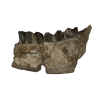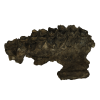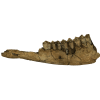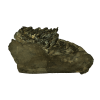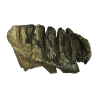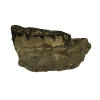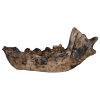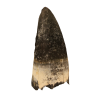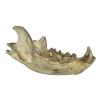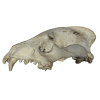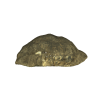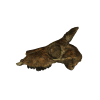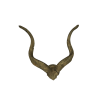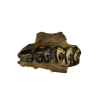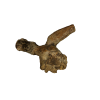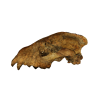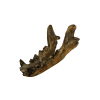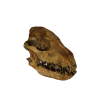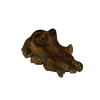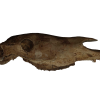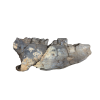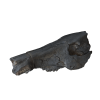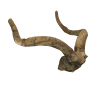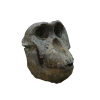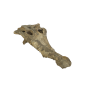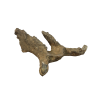In the later part of the geological sequence from the Koobi Fora Formation the fossil hippos are represented by four known species, Hippopotamus gorgops, aff. H. protamphibius, aff. H. aethiopicus, and aff. H. karumensis (formerly Hexaprotodon karumensis). Aff H. karumensis was the most common of the four genera in the Turkana Basin. The orbits are positioned high on the skull with an increased elevation of the eye sockets (orbits) through time (ER 30366). H. karumensis has small upper canines, and the small lower canines, as seen in this mandible, are set widely apart. The front of the lower jaw changes with time forming more of a projecting shelf in the later forms. The family Hippopotamidae emerged and evolved in Africa and migrated from Africa to Asia on several occasions. Hippos were abundant and diverse in the fossil record with some 40 different species recognized, however the modern day distribution is restricted to only two genera is in sub-saharan Africa, the common hippo and the pygmy hippo, which today is only found in west Africa. The earliest record of the subfamily Hippopotaminae is known from the Nawata Formation at Lothagam in the Turkana Basin where it was represented by several species 7 million years ago.
|
Hexaprotodon karumensis
KNMER 1308 Age approx. 1.60 Million Years
Digital Capture: N/A 0 Comments Order: Artiodactyla Family: Hippopotamidae Genus: Hexaprotodon Species: karumensis Element: Mandible Locality: East Turkana Year of Discovery: 1971 Other Fossils to View |






